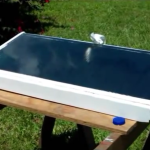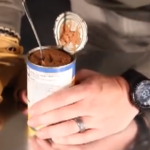When SHTF: How to Repair the Inner Lining of Shoes
Most people throw away shoes after the inner lining starts to fade or tear. However, there is a simple process that you can follow in order to make repairs and keep otherwise good shoes around for a little bit longer. Considering that we may not be able to get new shoes during a survival situation, it is easy to see how this trick can prove to be very handy.
Remove the Old Lining
The first step is to cut out the entire piece of old lining. How it is attached will vary from shoe to shoe, but generally speaking, it is usually stitched on top and glued to the bottom. Carefully cut away the lining by following the edges with a sharp razor blade. You want to try and keep the lining intact so that you can use it as a pattern for the new material that you want to create later. However, if it rips or gets deformed as you remove the lining, you can still improvise as you go along.
Making the Pattern
Place the old lining flat on a piece of thick paper or cardboard. Iron the lining on low heat in order to remove any wrinkles or creases in order to get it as close to its original shape as possible. Be careful not to scorch the lining or allow the edges to crinkle up. Once the lining has been pressed, trace its shape on the paper or cardboard. Cut out the shape of the lining and discard the old material.
Making the Replacement Lining
The next step is to take appropriate material and place the pattern on top. Use material that will not be abrasive while walking. Some people prefer to use material from an old pair of athletic shorts due to their breathe-ability and softness. Cut out two pieces. One will serve as the bed while the other will provide additional cushioning. However, you can also use thicker material and only cut out one layer if you like as well. Consider choosing fabric that matches the lining in the other shoe so the color differences will not be that noticeable.
Iron these pieces so they are flat, and attach them together with some pins to hold the lining in place. Cut out the material to match the pattern and trim as necessary. Stitch the two pieces together, but make sure that you keep the material taut to avoid wrinkles from forming.
Re-attaching the Lining to the Shoe

You can either stitch the lining to the shoe or use adhesive. Using stitching will provide a much better finished product because it should be able to withstand the forces generated from walking and everyday use. However, you can also use a good liquid adhesive to secure the lining in place as well. Ideally, use adhesive to attach the bottom portion of the lining and stitching for the top. Choose the method that works best for you.
Before attaching the lining back inside the shoe, make sure that you remove any fragments or particles that may have come loose while you were removing the old one. These pieces of debris can reduce the strength of the adhesion after being re-inserted.
Tuck the lining in below the padding on the inner sole of the shoe in order to maximize adhesion as well. After applying the glue, stick a glass, wooden block or shoe horn into the shoe and apply firm pressure against the heel. This will help to compact the lining and create a stronger adhesive bond. Trim any excess lining that may be present before gluing everything into place in order to reduce the bunching or buckling of the material.

This process is just a generalization, and there is plenty of room to improvise based on your needs, material available and type of shoe that you are repairing. However, even if you perform a simple repair job, the new lining can reduce irritation and blistering and give you shoe a new lease on life. Try it for yourself and get a feel for the process so that you will know what to do if you are ever in a situation where getting new shoes is not a possibility.













